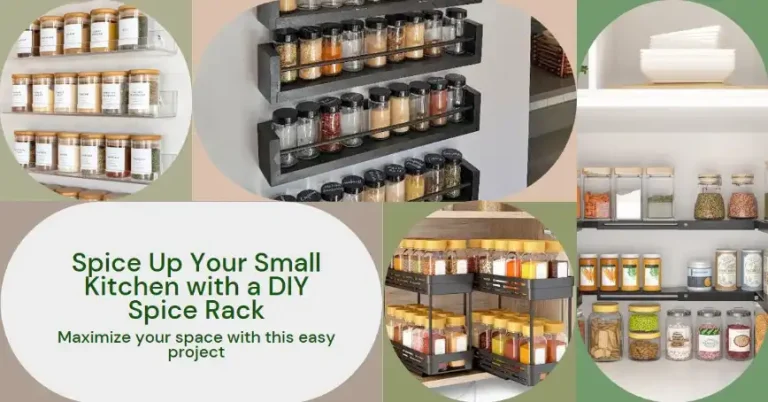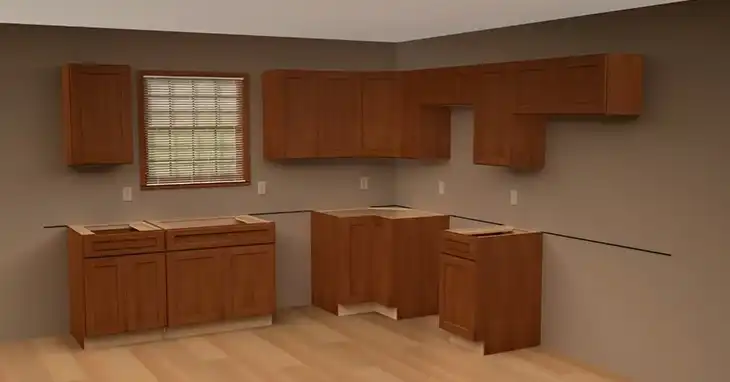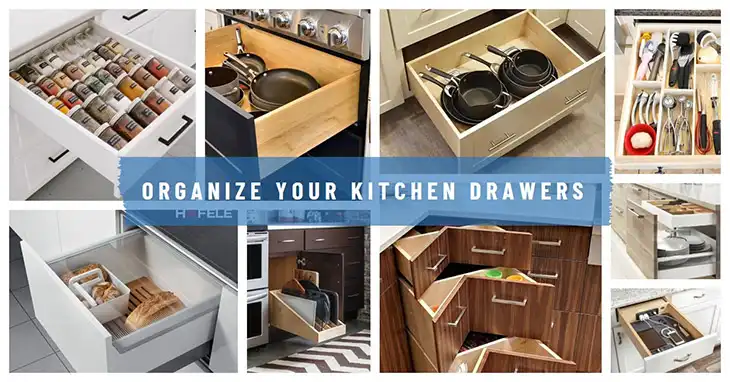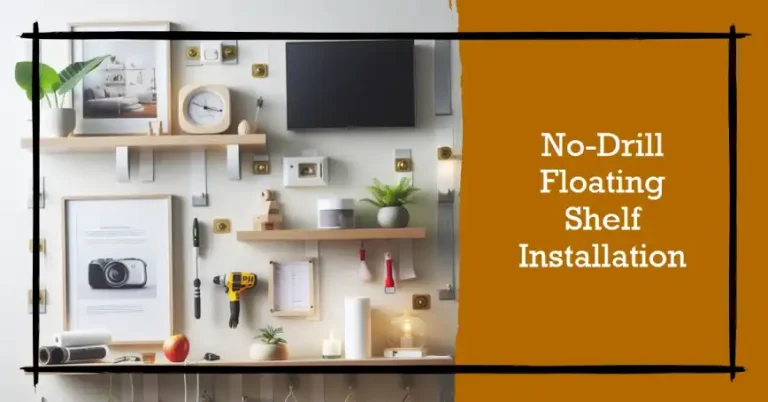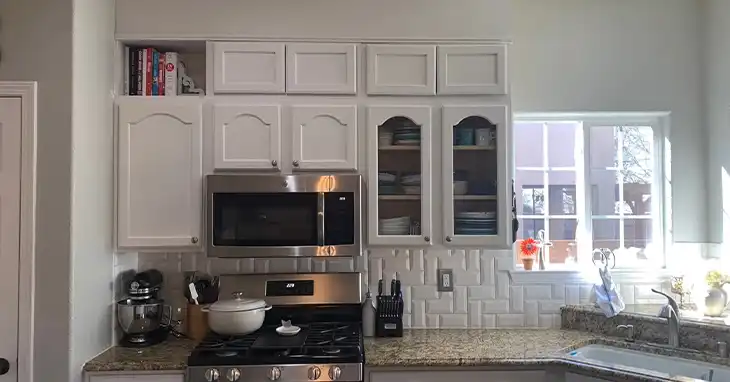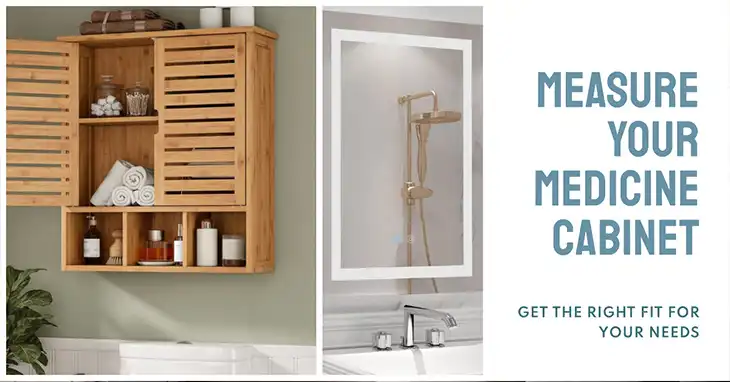Is Purchasing Used Cabinets Worth It?
Renovating a kitchen or bathroom can be expensive, and one way to potentially cut costs is by purchasing used cabinets. The answer to whether this is a worthwhile option depends on various factors.
In this article, I will explore the benefits and drawbacks of buying used cabinets to help determine if it’s the right choice for your specific project. I will provide a detailed checklist of things to inspect, as well as advice on which types of used cabinets may be the best investment. By the end, you’ll have a clear understanding of the considerations involved in purchasing used cabinetry.
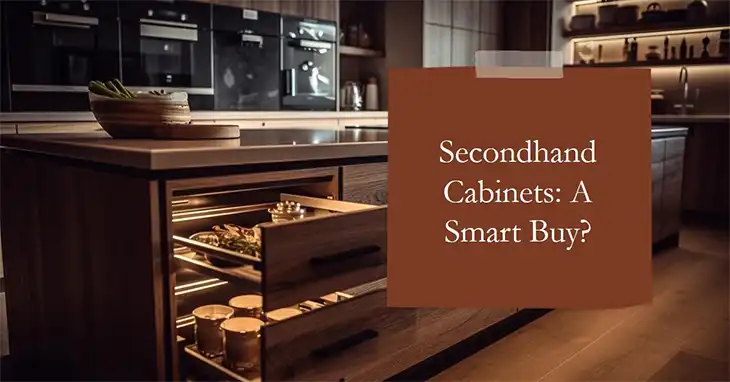
What are the Benefits and Drawbacks of Buying Used Cabinets
Buying used cabinets can be a real money-saver, but it’s kinda like playing the lottery – you might hit the jackpot, or you might end up with a dud. Let’s find out the good, the bad, and the ugly of going the second-hand route.
Benefits of Buying Used Cabinets
Purchasing used cabinets can provide some advantages if you know what to look for.
Cost Saving
One of the biggest advantages of purchasing used cabinets is the potential cost savings. New cabinets can be incredibly expensive, especially if you opt for high-end materials or custom designs. By choosing gently used cabinets, you can significantly reduce the overall cost of your kitchen or bathroom renovation project.
For example, a complete kitchen cabinet setup from a top-tier brand could easily exceed $20,000 for new units, while sourcing gently used cabinets of the same quality might cost only $6,000 to $8,000. These savings can be reinvested into other aspects of your renovation, such as high-end countertops, appliances, or flooring, or simply kept in your pocket as disposable income.
Could be Able to Find High-Quality Cabinets
In some cases, you might be able to find high-quality cabinets that were previously owned by homeowners who simply wanted to update their kitchen or bathroom design. Many homeowners opt to replace their cabinets not due to functional defects or poor construction, but rather to refresh their home’s aesthetic with a new style or design trend.
As such, you may be able to acquire cabinets made from sought-after solid wood species like cherry, maple, or oak, or featuring durable and visually appealing materials like stainless steel or granite countertops. These cabinets, though used, could have been meticulously maintained and cared for by their previous owners, ensuring their longevity and preserving their quality.
Drawbacks of Buying Used Cabinets
However, there are also some potential drawbacks to consider before taking the plunge into the used cabinet market.
Condition is Crucial
The condition of used cabinets is a significant factor to consider. Even if they appear to be in good shape at first glance, there may be underlying issues such as water damage, warping, or structural problems that are not immediately visible. These issues can compromise the integrity and longevity of the cabinets, potentially leading to costly repairs or replacements down the line.
Water damage is a common culprit, as it can lead to warping, swelling, or delamination (separation of the laminate layers) of the cabinet materials over time. This damage may not be visible on the surface but could compromise the structural integrity and longevity of the cabinets, potentially leading to costly repairs or replacements down the line.
Matching Sizes and Styles Can Be Difficult
One of the primary challenges when purchasing used cabinets is finding a complete set that matches in size, style, and finish. Unlike purchasing new cabinetry, where you can select a cohesive collection designed to work seamlessly together, used cabinets are often sourced piecemeal from various homeowners or suppliers.
This can result in a mismatched assortment of cabinets, with variations in door styles, wood species, stains, or finishes that can detract from the overall aesthetic appeal and flow of your kitchen or bathroom design. Such disparities can be particularly jarring in open-concept layouts or when the cabinets are a focal point of the space.
Installation Challenges Might Arise
Installing used cabinets can be more complex than installing new ones. You may need to make adjustments or modifications to accommodate any irregularities or damage, which can increase the installation time and cost. Additionally, if the cabinets were not properly disassembled and stored, they may have sustained additional damage during the moving process.
For example, if the cabinets were not adequately protected or supported during the moving process, the weight of the materials could cause the frames to bend or twist out of square, leading to fitment problems during installation. Additionally, any existing hardware or components may have become loose or misaligned, further compounding the installation difficulties.
Require More Cleaning and Prep Time Before Installation
Used cabinets, by their very nature, have been subjected to wear and tear from previous use and may have accumulated dirt, grime, or other forms of soiling over time. As such, they will likely require a significant amount of cleaning, degreasing, and preparation before they can be installed in your kitchen or bathroom.
This process may involve tasks such as removing old finishes through chemical stripping or sanding, thoroughly cleaning and degreasing all surfaces, and potentially refinishing or repainting the cabinets to achieve a consistent and visually appealing look. Depending on the condition of the cabinets and the desired level of restoration, this cleaning and preparation process can be extremely time-consuming and labor-intensive.
Things to Checkout While Buying Used Cabinets
If you decide to purchase used cabinets, it’s crucial to thoroughly inspect them before making a purchase. Here are some key things to look out for:
General condition
Begin by assessing the overall condition of the cabinets, paying close attention to any signs of potential damage or deterioration. Carefully inspect each cabinet box, drawer, and door for evidence of water damage, which can manifest as warping, discoloration, swelling, or softening of the materials.
Examine the cabinet frames and structural components for any cracks, splits, or areas of weakness that could compromise the integrity of the unit. In the case of laminate cabinets, pay close attention to any delamination, which is the separation of the laminate surface from the underlying substrate material.
Additionally, take note of any visible scratches, dents, or other cosmetic blemishes, as these may need to be addressed through refinishing or other repair work, adding to the overall cost and effort required to restore the cabinets to a visually appealing condition.
Doors and drawers
Carefully inspect each door and drawer and ensure that they open and close smoothly without any resistance, binding, or rubbing against the cabinet frame. Test the operation of each component multiple times to identify any potential issues or irregularities.
Examine the hinges and drawer slides for any signs of damage, such as bent or broken components, excessive wear, or looseness. Ensure that all hardware is present and properly secured, as missing or damaged pieces can be challenging and costly to replace, especially if the cabinets are older or from a discontinued product line.
Pay close attention to the alignment of the doors and drawers when opened and closed. Misalignment or gaps can indicate underlying structural issues or damage to the cabinet frame, which may require extensive repairs or adjustments during installation.
Carcass (the main body)
The carcass, or main body, of the cabinets is the foundation upon which all other components are built, making its structural integrity paramount. Carefully inspect the carcass for any soft spots, areas of weakness, or signs of previous repairs or modifications.
Apply firm pressure to the sides, top, and bottom of the cabinet box to check for any flex or give, which could indicate compromised materials or construction. Look for signs of wood rot, water damage, or insect infestation, as these issues can significantly undermine the strength and longevity of the cabinets.
If possible, carefully remove any shelves or drawers to gain better access to the interior of the carcass and inspect for any hidden damage or areas of concern that may not be visible from the outside.
Completeness
Before finalizing your purchase, ensure that all necessary components are included with the used cabinets. This includes shelves, brackets, drawer boxes, and any additional hardware or accessories that should be part of the complete set.
Carefully inventory each piece and cross-reference against the manufacturer’s specifications or product listings to ensure nothing is missing. Even seemingly minor components like shelf pins or door catches can be crucial for proper installation and functionality, and sourcing replacements for older or discontinued models can be a significant challenge.
Additionally, inquire about the availability of any spare parts, touch-up kits, or other accessories that may have come with the original cabinets. These items can be invaluable for future repairs, refinishing, or maintenance, and their absence could result in additional costs down the line.
Which Types of Used Cabinets Should Be Brought?
While various types of used cabinets are available on the market, one category that can be particularly worthwhile to consider is display kitchen cabinets from showrooms, model homes, or design centers. These cabinets are often in excellent condition, as they have been well-maintained and used primarily for display purposes, with minimal wear and tear from actual use in a residential setting.
Display cabinets are typically treated with exceptional care by the showroom or builder, as they are intended to showcase the product line and attract potential buyers.
Perhaps most importantly, display kitchen cabinets may be available at significantly discounted prices when the showroom or model home is being updated or closed. Builders and showroom operators are often motivated to liquidate their existing inventory to make way for new product lines, presenting an opportunity for savvy homeowners to acquire high-quality cabinetry at a fraction of the original cost.

